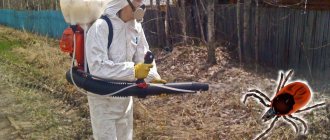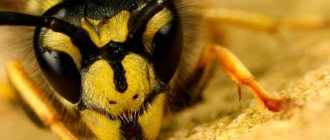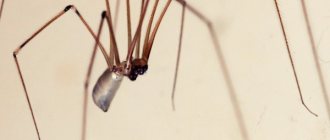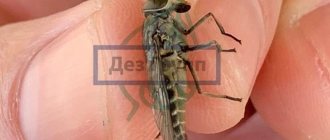Viral encephalitis is spread by ixodid ticks that live among the grass and on the lower branches of bushes. The infection is transmitted through a bite, the incubation period lasts 7-30 days. Symptoms manifest clearly or are absent in the case of carriage. Is it possible to drink milk if a goat has been bitten by a tick? What are the dangers? Read on in our article.
Nutritional route of transmission of tick-borne encephalitis
The main source of infection in alimentary, food contamination are domestic animals - sheep, cows, goats. The virus enters milk and then into the human body when the raw product is consumed.
Blood-sucking parasites feed on the blood of domestic animals. They attack in grass pastures and lower branches of bushes. They bite a goat, stick to it for several days, then fall off, lay eggs, and die. Reproduction requires warm weather, high humidity, and the presence of a rotten layer of foliage and grass.
Important!
The most dangerous way of contracting encephalitis through the alimentary route is goat's milk, since goats are characterized by a long period of viremia. Animals can get sick several times throughout their lives, being infectious at different stages. Symptoms do not always manifest themselves clearly, so a person drinks milk, unaware of the terrible disease in the goat.
Maliciousness
Insects injure the skin and transmit contagion. Conflicting information comes from different sources about tick-borne encephalitis in goats, which is dangerous to humans. There are no clinical manifestations of this pathology in ruminants, but there is a possibility of the virus being excreted in milk for 8 days after a tick attack.
Methods of infection
If several individuals are parasitized on a goat, they suck a significant amount of blood, which causes anemia. Trying to remove a tick can cause significant harm to the victim. The insect's head remains deep in the skin, causing severe inflammation.
Tick sucking blood
Infection with encephalitis through goat milk
When consuming a raw product, the virus enters the gastrointestinal tract. Localized in tissues and cells. Gradually penetrates the capillaries, enters the blood, spreads throughout the body, multiplies in the blood. From the lymph, the virus migrates to the immune system, affecting the central nervous system, brain, and spinal cord.
The goat was bitten by a tick
The first manifestations of encephalitis resemble the flu, but tend to recur after some time with renewed vigor. In the absence of qualified therapy, the virus progresses. In severe cases it leads to madness, paralysis, disability, and death.
On a note!
Tick bites are less dangerous for cows. The virus penetrates into milk, but the period of viremia is much shorter than in goats, so the frequency of human diseases through cow's milk is lower.
History of virus research
Medicine has long been studying encephalitis, with doctors and scientists from around the world doing this, including the Russian Federation. The author of the first clinical description of the disease was the domestic scientist A. Panov, who provided the necessary information about the disease back in 1935.
Soon, a group of scientists from Pavlovsky, Zilber, together with other specialists, studied in more detail the clinical picture of encephalitis, its epidemiology, and developed some preventive methods and rules.
The virus was first isolated in 1937 by scientists from the brains of dead patients, as well as during an experiment with ticks and wild vertebrate animals from the Far East.
Every year, Rospotrebnadzor employees remind citizens of the country that before consuming milk, it must undergo fairly effective heat treatment; at a minimum, this product must be thoroughly boiled.
As statistics show, almost every year in Russia there is an infection with viral encephalitis through milk. The main route of infection is the consumption of a sheep or goat; less commonly, the carrier is a cow's dairy product, in which harmful bacteria live for about 14 days, and in sour cream made from contaminated milk - 60 days.
Scientists report that if an animal is bitten by an infected tick, then they themselves become carriers of the disease in erased forms, and in the future they become chronic carriers when the virus lives in the blood and milk of the animal: goats, cows, etc.
At any market in any city in the country you can buy raw milk, unauthorized sour cream, cottage cheese, cream and other dairy products from local farmers. Many families like to send their children to the village, where ticks not only directly bite people, but also animals that provide seemingly healthy food. Any milk must be boiled before consumption.
Symptoms of encephalitis in goats
Tick bites cause a local allergic reaction - redness, swelling, induration. After some time, the skin is restored without special treatment. Symptoms of encephalitis rarely appear clearly. There is blood in the goat's urine, fever, paralysis of the hind and then forelimbs, and convulsions. After a few days, recovery or complications occur. It all depends on the strength of the animal’s immunity.
In most cases, the disease is asymptomatic. The goat behaves as usual. Only the appetite decreases slightly and the amount of milk decreases.
Protection and prevention measures
Prevention of tick-borne encephalitis:
If you are going on a hike or a trip to an area that is “famous” for a large number of ticks (and especially if this region is an area where tick-borne encephalitis is widespread), it makes sense to get a special vaccination in advance.
The vaccination course consists of two vaccinations, the interval between which is from one to three months. Further revaccination should be carried out after three years (and for children over twelve years old after the first revaccination - every five years).
Vaccines against tick-borne encephalitis are never given to children under 1 year of age. In the same way, it is very risky for small babies to carry out emergency prophylaxis (if the baby is bitten by a tick), because immunoglobulin preparations are based on protein and can cause a severe allergic reaction. Think about this when you take completely defenseless babies into the forest with you!
Prevention of tick-borne borreliosis:
Alas, there is no vaccine against tick-borne borreliosis. But, fortunately, unlike tick-borne encephalitis, in the early stages this disease can be quickly and successfully treated
Therefore, for 30 days after a tick bite, it is very important to carefully monitor the symptoms - whether they appear or not. The most obvious marker of tick-borne borreliosis is the appearance of a rash in the form of red circles around the bite site
If red circles appear, you must immediately contact an infectious disease specialist and begin a course of treatment.
If red circles do not appear on the skin, but within 60 days after the tick bite the child experiences muscle and joint pain, you should also consult a doctor immediately. In this case, no longer with suspicion of tick-borne borreliosis, but with obvious concerns about tick-borne encephalitis.
Emergency drug prophylaxis against tick-borne borreliosis also exists - it can be prescribed by a doctor upon your request, but no later than 72 hours after the bite. However, this procedure is performed only on children over 8 years of age.
What to do to avoid getting infected
You can protect yourself and your family from a fatal disease in a simple way - heat-treat milk. The encephalitis virus dies at a temperature of 60 degrees Celsius in 2 minutes. At temperatures within 37 °C it is destroyed after 2 days. When boiled, it collapses in the first seconds. Just bring the milk to a boil and turn it off immediately.
Other methods of protection involve reducing the likelihood of goats being bitten by ticks while on pastures.
Therapeutic measures
Tick-borne encephalitis is afraid of high temperatures and dies at 60° C within half an hour. At a temperature of 37° C, the bacterium lives for several days. You can get rid of the virus by boiling goat milk for 2 minutes. Experts recommend eating only boiled or sterilized products.
People who keep pets need to follow simple rules, creating an unfavorable environment for the development of ticks. To prevent goats from becoming infected with tick-borne encephalitis, you should regularly mow the grass, actively fight rodents, remove leaves and maintain the area. Goats that produce milk must graze on specially prepared pastures.
Following these instructions will help limit the possibility of becoming infected with tick-borne encephalitis through goat's milk.
How to keep your goat safe
To reduce the likelihood of bites, it is necessary to create unfavorable living conditions for pests. They mow the grass, remove last year’s hay, burn the leaves, graze dairy goats on special pastures, conduct regular inspections of wool, etc.
Stall housing
In areas where there is a massive spread of ticks in the spring, the period of confinement is extended. During this period, the grass is still small, it is inconvenient for the goat to grab it, and high humidity causes intestinal disorders. When the greenery rises above 15 cm, dry, warm weather sets in, the number of ticks decreases, and animals can be turned out to pasture.
Goat housing
On a note!
This method is not suitable for regions with constantly high humidity - forest, taiga areas. Ticks attack goats from grass and leaves of bushes.
Choosing the right pastures
Whether ticks bite goats and how often depends on the choice of pasture. For normal functioning of pests, high humidity and the presence of fallen leaves are required. Ticks lay eggs in the litter; parasites climb onto the goat’s body from tall grass and bush branches.
On a note!
To prevent bites, it is necessary to graze animals away from broad-leaved forests, trees, thickets, fields with clover, alfalfa, and rapeseed. Ticks are not found on open lawns illuminated by the sun.
Destruction of parasites on the grass
The method is suitable for cases where goats are grazed in a limited area. During periods of mass tick activity, vegetation is treated with pesticides. The drugs destroy ticks, do not harm animals, and do not pass into milk.
Treatment must be carried out in dry, windless weather. The maximum properties of the preparations last for 2 hours, then they dry, are absorbed by plants, and protect the area for about 20 days. Efficiency is not affected by sunlight or rain. Goats are allowed to be released onto pasture after the drug has dried.
Physical destruction of ticks on a goat
In the stall, you need to carefully examine the animal’s fur or comb it with a special comb. Ticks spend a long time simply climbing the fur in search of a suitable place to feed. Then they stick for 2-5 days. The virus enters the goat’s blood on the second day that the parasite remains under the skin. Regular examination will prevent tick bites, tick suction, and the development of encephalitis.
Treating goats for ticks
You can protect your animal from bites and yourself from a terrible disease using repellents. Special substances interact with skin lipids and remain effective for up to 30 days. When the tick gets on the body of a goat, paralysis begins and it disappears. Another group of drugs repels pests with smell.
Biology
The arthropod parasite damages the skin and sucks blood. To prevent it from curling up, the tick releases saliva, which may contain pathogens of dangerous diseases - viruses, bacteria, protozoa. To prevent the prey from interfering with the insect's feeding, the female secretes an analgesic. In just a few days, an ixodid tick can increase its own size by consuming blood a hundred times. Having had enough, the female falls off, lays eggs and dies.
recommended articles:
- How to prevent or treat coccidiosis in turkey poults?
- Treatment of sheep against ticks Psoroptosis
Where can ticks live?
If there is no suitable food, the larva, nymph or adult falls into suspended animation, remaining viable for years. In this state, the parasite is immune to insecticides, which makes it difficult to control.
Ticks are active during the period when there is young growing grass in a pasture, meadow, or clearing. The best habitat for them is considered to be forest litter, or the remains of broad-leaved plants, for example, forage crops such as rapeseed and legumes. In frosty or dry, hot weather, the tick freezes, but at the first opportunity it becomes active. Ticks are found on goats visiting places where grass grows in the south of the Russian Federation as early as February. The second peak of insect activity occurs in the fall. In wooded areas, with sufficient moisture, ticks are active throughout the grazing season.
How to treat goats against ticks
There are several types of drugs with different mechanisms of action, but they all protect the animal from pest bites and tick-borne encephalitis virus.
Preparations for the treatment of goats
Injectable anti-tick products
The most popular drugs based on ivermectin. A subcutaneous injection is given at the rate of 1 ml of product per 50 kg of body weight. Protects against mosquitoes, fleas, lice, horseflies, ticks, and many other parasites. Contraindicated for pregnant females in the last 5 weeks and lactating animals.
Emulsions, aerosols
Common products with insecticidal activity.
- PHOSES. Dichlorvos, Blotik, Diazinon. Goats are processed outdoors. The spray can is kept at a distance of 20 cm from the fur. Milk is allowed to be drunk the next day.
- Pyrethroids. Insecticidal preparations are used to treat goat wool and pastures. Before use, prepare the solution according to the instructions. The concentration is selected depending on the body weight of the animal. After treatment, goats are allowed to drink milk after the second milking. The drugs are effective for up to 1 month. Effective products - Tsifoks, Butox, Neostomazan.
- Fipronil insecticides. The preparations are intended for treating dogs and cats against ticks, but can be used for disinsection of goats. BARS spray is often used. The active substances are localized in the sebaceous ducts of the skin and on the animal’s fur. Protects against ticks for 2 months.
Before using any chemical, you need to study the instructions and the list of contraindications. To achieve maximum effect, several methods of control and prevention are used at once.
Consequences of a dog bite
An animal attack on a person always has negative consequences. Emotional people, especially children, may need psychological help to cope with traumatic memories.
A dog bite is always accompanied by human infection, and the lack of necessary and correctly prescribed treatment leads to the development of the following diseases:
Brain abscess
- damage to the nervous system causes meningitis and brain abscess;
- due to damage to bone tissue, arthritis and osteomyelitis develop;
- an animal can infect a person with ticks, lichen, and a number of fungal diseases.
The greatest danger is the risk of contracting rabies from a sick animal. Ignoring the disease and refusing treatment will lead to death. Symptoms of rabies in the first stage of development:
- pain in muscles, throat, bite site;
- burning, redness in the affected area;
- loss of appetite;
- slight increase in temperature.
With the beginning of the second stage of the spread of the rabies virus, a person begins to show signs of emotional agitation, fear of water, excessive salivation, and aggressive behavior.
At the third (last) stage, the illusion arises that the disease has receded. Most of the symptoms disappear, but then the patient’s temperature rises critically (up to +40...+42 °C), convulsions and body paralysis appear. At this stage, rabies cannot be treated and the person dies.
Scabies mite in a goat
A contagious disease, scabies is caused by mites. There are pruritic scabies - the parasites live in the upper layers of the epidermis, and skin scabies - they live on the body. The disease is characterized by severe itching, peeling skin, and hair loss. Animals lose weight, eat poorly, don’t sleep, and their milk yield decreases. They infect all nearby goats and people. Symptoms appear on the face, stomach, back, and udder.
Scabies is treated with special preparations, folk remedies - baking soda, green soap, ammonia, ash, tar, creosote, creolin. And also benzyl benzoate emulsion, tar, sulfur ointment, Wilkinson. The treatment is repeated every 7 days until complete recovery.
You can drink milk if your goats have scabies; there are no mites there. Infection occurs through contact. During the period of active use of the medicine, milk should be abandoned for a while.
Treatment of piroplasmosis
The effectiveness of therapy and the life of cattle depend on how quickly drug treatment is started. Medicines for cows against ticks: pyrotropic medications: Azidin-vet, Berenil, etc.
In order to prevent cow tick bites, it is necessary to take preventive measures:
- to protect the cow, you need to use special sprays and emulsions to repel blood-sucking pests, which are sprayed on the skin of animals;
- graze cows only in clean areas of the pasture, for which they should be pre-checked at the beginning of the grazing season;
- after returning from pasture (during the period of danger of the appearance of “bloodsuckers”), all cattle must be carefully examined for parasites and the tick must be immediately removed, if any.
First aid
An attack by a blood-sucking parasite is not only unpleasant, but also very dangerous. After all, ticks are among those parasites that are carriers of dangerous diseases and, when bitten, can transmit an infection to a person. Starting from spring and ending in autumn, bloodsuckers are able to attack humans.
The most frequent visits to medical institutions are associated with suspected infections of encephalitis, borreliosis, as well as inflammatory processes that developed after the attack.
The parasites are most dangerous in regions where there are the greatest number of encephalitis outbreaks. Not every tick is dangerous, only the one that is infected itself, but the risk of infection is quite high. In many ways, it is human actions that can minimize the risk of infection. In cases where a bite has occurred, the further situation, possible complications and the development of the disease depend on the actions.
It is not always possible to notice a parasite attached to the body, and this greatly complicates the situation. The fact is that when these parasites bite, they release an anesthetic enzyme and the person does not feel any discomfort at all. Having drunk blood, it falls off the body on its own and it is only possible to understand that an attack has occurred when symptoms appear.
Another danger is that if a person does not know about the attack and after a while he develops symptoms, he does not associate them with a tick, but thinks that it is a cold or flu. Without proper treatment, the infection develops in the body causing serious consequences.
Therefore, it is very important after every walk in nature, in a park area, to take a shower and carefully examine the body. It takes the parasite a long time to satisfy its hunger, which makes it possible to detect it
If we talk about symptoms, they include increased body temperature, weakness and drowsiness, aching joints, and a person loses appetite. If a person is hypersensitive, dermatitis develops on the skin. There may also be swelling where there is a dot in the center. It is very easy to spot a parasite that feeds on blood.
We process cowsheds
Acaricidal treatment of barns is one of the conditions for achieving the best effect in the fight against parasites. It is carried out through the use of aerosols and water-soluble preparations. Conveniently, you can use the same products as for treating cows.
Particular attention should be paid to cracks in walls and feeders. It is first necessary to clear the room of manure and only then spray it with acaricides, for example, chlorophos (1.5% solution of the active substance)
Approximate consumption: 2 liters of liquid per 10 m2 of area. Spraying is carried out in a ventilated area, after which the windows and doors are closed and left for 2-3 hours. The treated barn is first thoroughly ventilated, and only after ventilation are the cattle allowed inside.
Prevention of tick control in cattle should be comprehensive, i.e. Not only the animal itself is processed, but also the room in which it lives. Actions are carried out systematically: both in spring and summer and in autumn and winter.
If the article was useful, please like it.
47










